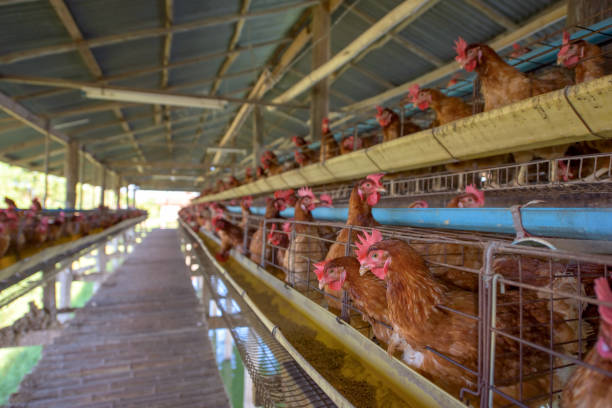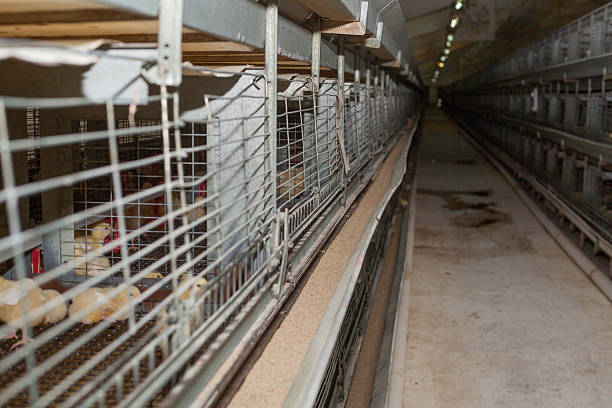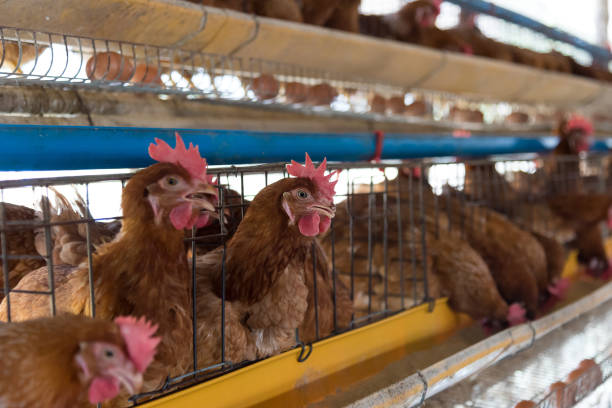Efficient automatic feeding and egg collection system for large layer farms
**Efficient automatic feeding and egg collection system for large layer farms**
Running a successful large-scale layer farm requires more than just quality chicks and good feed. It demands cutting-edge equipment that streamlines day-to-day operations, improves bird health, and maximizes output—especially when it comes to feeding and egg collection. In the modern poultry industry, automation has become a must-have, not a luxury, and the right automatic feeding and egg collection system can make all the difference.
If you’ve been managing your layer farm manually or with outdated systems, you might already be losing money due to labor inefficiencies, feed wastage, inconsistent egg yields, or increased disease risks. That’s where a modern, automatic feeding and egg collection system comes in: it’s not just a convenience—it’s a necessity for staying competitive in today’s fast-paced agribusiness world.
### Why automation is the future of large layer farming
The poultry industry is evolving rapidly, driven by global demand for affordable, high-quality protein and pressure to meet stringent food safety and animal welfare standards. For large layer farms with thousands—or tens of thousands—of birds, managing feeding, egg collection, waste management, and health monitoring manually is no longer sustainable.
Labor costs are rising. Diseases can sweep through flocks in days. Consumers are increasingly concerned about how their food is produced. At the same time, technology is making smarter, more efficient systems more accessible than ever before.
An automatic feeding and egg collection system is at the heart of modern poultry management because it directly impacts bird productivity, welfare, and profitability. These systems reduce human intervention, ensure consistency, and minimize the risks of disease spread, underfeeding, or delayed egg collection—all of which are critical for maintaining high production levels and food safety standards.
### The main components of an automatic feeding and egg collection system
A comprehensive automatic system for large layer farms typically consists of three core subsystems—feeding, egg collection, and management control. Let’s break them down one by one.
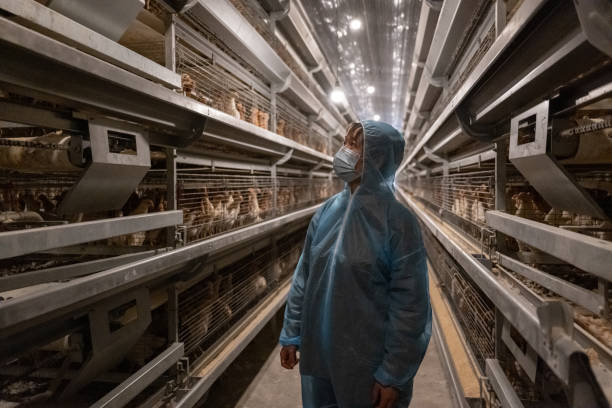
#### 1. Automatic feeding system
The feeding system ensures that every bird in the flock receives the correct amount of feed at the right time. It includes:
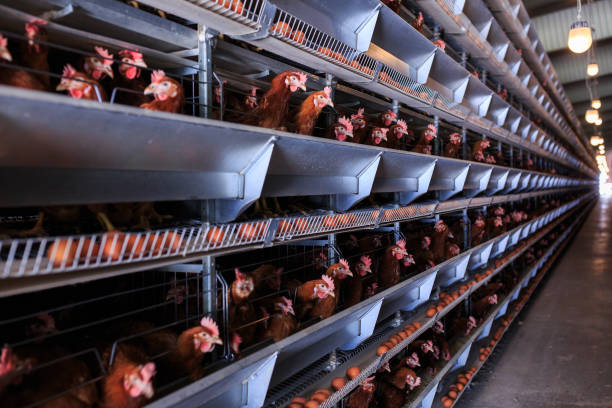
– **Feed silos and storage**: These store bulk feed and dispense it into the conveying system as needed.
– **Chain or belt feeders**: Chain systems are commonly used in layer houses due to their reliability and durability. Belt systems are also gaining popularity for their quiet operation and even feed distribution.
– **Control panels**: These manage feeding schedules based on flock requirements, time of day, and age of the birds.
– **Monitoring systems**: Some advanced setups include sensors that detect feed levels and alert farm managers when refills are needed.
The automatic feeding system ensures uniform feed distribution, reduces feed wastage, and allows for precise rationing, especially during critical stages like growing or peak laying periods.
#### 2. Egg collection system
Timely egg collection is essential not only for food safety—such as avoiding contamination—but also for preserving egg quality and maximizing shelf life. An automatic egg collection system includes:
– **Rolling belts or conveyors**: These run beneath each cage row, gently guiding newly laid eggs to a central collection point or egg packing room.
– **Sorting and grading stations**: Optional but highly beneficial, especially for commercial farms that supply directly to retailers. These systems automatically sort eggs based on size and detect cracks or other imperfections.
– **Centralized control system**: This allows farm operators to track egg production in real time and manage harvesting schedules efficiently.
With an automated system, farmers can collect eggs more frequently—sometimes every few hours—making it easier to maintain cleanliness, prevent breakage, and reduce the risk of rodents or insects being attracted to fallen eggs.
#### 3. Integrated control and monitoring system
This is the brain of the operation, linking the feeding and egg collection processes. Modern systems offer:
– **Remote monitoring and control via smartphones or laptops**, allowing farm managers to adjust settings, receive alerts, and monitor bird behavior without being on-site.
– **Data logging and analytics**, including average daily feed intake, number of broken eggs, and even behavior trends that may indicate health issues.
– **Energy-efficient operation**, often powered by a combination of AC and DC systems, with emergency backup in case of outages.
When all these components work together seamlessly, they create a smart, responsive environment that keeps the chickens healthy and productive.
### Benefits of going automated
Switching to automatic feeding and egg collection systems isn’t just about keeping up with technology—it’s about reaping tangible benefits that make your farm more efficient, profitable, and sustainable.
#### Reduced labor requirements
One of the most immediate advantages is the need for fewer workers. Manual feeding and egg collection are labor-intensive and prone to human error. An automated system can be programmed to perform routine tasks without constant supervision, freeing up your staff to focus on bird health, vaccination programs, or management tasks.
This also helps address the issue of finding skilled farmhands, a common challenge in rural areas and even more so in developed countries where fewer people are interested in manual agricultural labor.
#### Improved feed efficiency
Automatic feeders ensure consistent, timely, and accurate delivery of feed. This prevents overfeeding, underfeeding, and competition among birds, which can lead to stress and aggressive behavior. Precise portioning not only saves feed costs but also ensures better bird health and uniform growth, especially in pullet and point-of-lay stages.
#### Higher egg quality and hygiene
Eggs collected manually can easily become soiled or cracked before they reach the packing area. With automatic conveyors, eggs are moved quickly and gently, reducing breakage and limiting exposure to feces or dust. Timely collection also makes it easier to cool and clean the eggs promptly, which is crucial for maintaining freshness and extending shelf life.
#### Real-time data and predictive management
Modern automation systems provide valuable data that helps farmers optimize their operations. From tracking feed consumption trends to egg production rates and even detecting early signs of disease or stress through behavioral changes, data-driven management gives you proactive control over your flock’s health and productivity.
#### Improved bird welfare and reduced disease risk
When feeding and egg collection are consistent and stress-free, birds experience less crowding, hunger frustration, and aggressive behaviors. This contributes to better laying rates and overall bird health. Additionally, by reducing human contact and speeding up egg retrieval, the risk of disease transmission is minimized.
### Choosing the right system for your farm
Not all automated feeding and egg collection systems are created equal, and selecting the right one depends on several factors:
#### Farm size and bird capacity
For small to medium operations, a simplified automatic system with fewer data features may suffice. However, large-scale farms with hundreds or thousands of birds require more robust, scalable systems that can handle high volumes reliably and efficiently.
#### Type of housing system
Conventional cage systems, enriched colony systems, or free-range setups—each requires a feeding and egg collection system tailored to the layout and bird behavior. For example, floor-fed birds may need a different feeding mechanism compared to cage systems.
#### Budget and ROI expectations
Automation can be a significant initial investment, but when planned carefully, the payback period can be surprisingly short. Consider the long-term savings in labor, feed efficiency, and lower mortality and breakage rates.
#### Ease of maintenance and support
Choose a system made from high-quality, durable materials that are easy to clean and maintain. Also, make sure your equipment supplier offers strong after-sales service, spare parts, and technical support, especially in international markets.
At Livi Machinery, our range of automatic feeding and egg collection systems are modular, easy to expand, and supported by a global partner network to ensure long-term reliability and performance.
### Best practices for implementing and managing automation
Installing an automated system is a big step—and to get the most out of it, it’s essential to do it right. Here are some best practices to follow:
#### 1. Work with experienced suppliers
Partner with a reputable poultry equipment manufacturer like Livi Machinery, who understands not just the technology, but also how it integrates into real-world farming environments. A good supplier can provide consultation, installation support, training, and ongoing maintenance.
#### 2. Train your team thoroughly
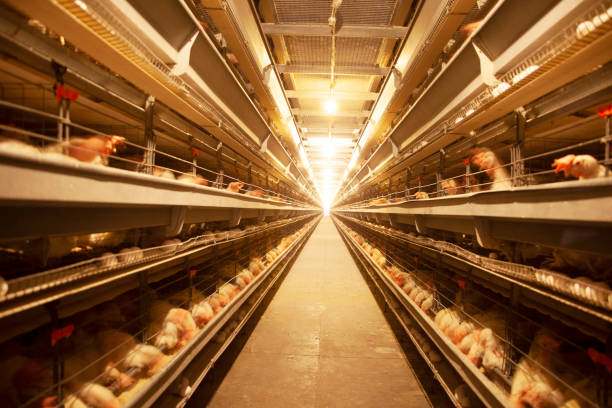
Even the smartest system will underperform if operators don’t understand how to use it. Invest in training for your farm managers and staff, so they can interpret data, troubleshoot basic issues, and make the most of the available tools.
#### 3. Keep maintenance on schedule
Preventative maintenance is key to keeping your system running smoothly. Grease bearings, check conveyor belts, calibrate feeders, and replace worn parts as instructed in the user manual.
#### 4. Monitor performance regularly
Use the system’s built-in data and analytics tools to track everything from feed usage to egg output, and adjust management practices accordingly. For example, if you notice a dip in feed intake, it may be the first sign of illness or stress in your flock.
#### 5. Expand incrementally
If full-scale automation is too overwhelming, start with the feeding or egg collection system, and gradually integrate the rest. This allows you to see real, measurable results before expanding further.
### The future of layer farm automation
As technology continues to advance, we’re seeing more integration of AI and IoT (Internet of Things) in poultry farm management. Imagine systems that:
– Automatically adjust feed formulas based on real-time nutritional data
– Predict disease outbreaks before they happen using behavioral monitoring
– Optimize energy use by integrating with renewable power sources like solar panels
– Automatically adjust lighting, ventilation, and climate control in response to bird comfort and performance data
These innovations are already in development or being tested in real-world farms, and will soon become the standard across the poultry industry.
Livi Machinery is committed to staying at the forefront of this evolution. Our products are designed not just for today’s needs, but for tomorrow’s opportunities, supporting the growth of a more sustainable, efficient, and responsible global poultry industry.
### Final thoughts
For large layer farms looking to improve productivity, reduce costs, and remain competitive in a challenging market, investing in an efficient automatic feeding and egg collection system is not just a wise decision—it’s essential. Automation streamlines operations, improves bird welfare, enhances egg quality, and ultimately increases profitability.
Whether you’re just setting up your first large-scale poultry house or upgrading existing facilities, the benefits of modern automation technology are clear and measurable. The right partner can help you choose the best system for your specific needs, budget, and long-term goals.
With reliable equipment, proper implementation, and effective farm management practices, your poultry operation can thrive in the 21st century.
At Livi Machinery, we understand the challenges that modern layer farmers face. That’s why we design and supply high-quality, customizable, and durable automatic systems that adapt to your workflow and scale with your business. If you’re interested in upgrading your poultry operation with the latest automation technology, we’re here to help you every step of the way.
Contact us today to explore our full range of feeding and egg collection solutions for large layer farms.



